Simplicity Coimbatore, The delight of home made jam </a
Jam ! That sweet ,sticky condiment which we have , at some point or the other, turned to when hungry. I even know of a dear friend who treats herself to a spoon of jam to satisfy sweet cravings. Making jams began as a way to preserve all the fresh produce which was available during the spring and summer months.
In various articles which talk about the history of Jam it is thought to have originated in the Middle East. Jams were made by stewing whole fruits in honey then cooled and stored. Preserving ,we have to remember, was not just something done out of fancy or boredom. It was often a means of surviving during the months when fresh food wasn’t available.
The honey got replaced by cane sugar, a new ingredient which came to the European shores from the ‘new world’.
An article in Spectator Life states; “The first recipe for jam appears in the first known cookbook : De Re Coquinaria (The Art of Cooking) which dates from the 1st century AD.”
Jam making began to get experimental with all sorts of exotic fruit carried back and forth from travels. The lemon juice which adds the necessary pectin for that jam-y texture was also believed to add the much needed Vitamin c which prevented the sailors from succumbing to scurvy. How jam making went from being small quantities made at home to an industry which bottles tons of this sweet condiment is fascinating to read. Do read the link at the end of this article.
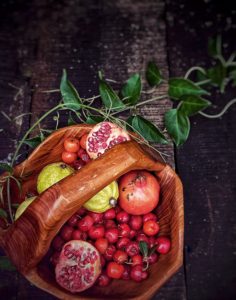
For me making jam always conjured up images of a cottage in the woods, white button roses on creepers winding their way up trellises , fresh clean mountain air, a spring gurgling away close by and the smell of jam drifting out of the open window. A closer image would be of a large pot bubbling away with a berry red sticky liquid and the stick, always wooden, used to stir away with not a care in the world but that of making the best pot of jam !
Even today this is a visual which I enjoy keeping in my mind’s vision. That’s probably why I always use a wooden ladle to stir the jam. 🙂 A large part this jam fixation was also the influence of all the talented women (I have come across over the years) who live in (hill stations) Coonoor ,Ooty and Kodaikanal who would make jam with the fruit picked from the trees in their gardens. Many of them still do.
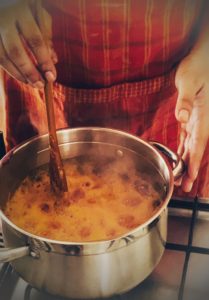
There are different ways to eat jam. I have observed that it is highly individualistic based on what each of us were exposed to while growing up. My mother and aunts for example love a slice of crunchy toast with a generous slather of butter and a thick layer of sweet jam ! Most often it was red !
Then there is the art of clumping a spoonful of whole fruit (preserve) jam on top of a piece of croissant or roll and artfully popping it into the mouth. The full taste of the jam hits the taste buds first before the textures of the dough follows. Delicious !
Next comes the jam and cracker.It involves spreading a thin film just to the point of having the top glistening. There is barely a hint of sweetness in the mouth but just enough to swallow that cracker without it feeling too dry.
Then of course comes the jam brigade where dollops of smooth (don’t know what fruit is in there) gelatinous spoonfuls are thrown into chappathi or beaten into milk or just eaten as is until the taste buds are left numb with an overload of sickly sweet coating.
The commercialisation of what once was a homemade jar of goodness is now termed unhealthy because it contains more sugar and less fruit. Sometimes it is only the essence of the fruit or fruit juice and a whole lot of additives and preservatives. Did you know that in order to use the word ‘jam’ food laws state that it must contain 60% more sugar than the quantity of fruit ?!
So for those of you who have never tried making jam before,please allow me to initiate you into the pleasure of jam making. I am told that there are few fruits which are stubborn and do not yield easily to being ‘jammed’ .Pineapple is one so we shall leave that to the jam making experts. But if you do have some strawberries ,guavas , papaya, grapes, apples (now in season) left over ,do make your own jam. It is delicious. The choice of what sugar to use is completely up to you . The first time we used a natural jaggery which was a bit too grainy so after that we switched to fine coconut blossom sugar or panam kalakandu powder.
Also, if I didn’t mention it before ; jam making is such an enjoyable process. Even if I am just staring at my white kitchen wall, jam making puts me in a happy state of mind. The joy of watching fresh fruit break down with the boiling of the sugar and the acid from the lemon juice is almost magical.
Until recently , we had made jam with only one variety of fruit ; starfruit /cherry /grape etc This time we had bits and pieces of different fruit leftover and thought why not a ‘mixed fruit jam’ ! So, on one occasion it was grape, cherry and pomegranate. Another time it was cherry, guava and pomegranate. Turned out delicious.
“Add beetroot juice” said my mother, “it will turn the guava jam pink”. But since we used the juice of the pomegranate, the colour was just as beautiful. That feeling of lifting up dollops of jam to see the different ways the light passes through is quite glorious. There are bits which are opaque with whole blobs of fruit, some portions which are like glass and the in between translucent parts which are glossy.
In supermarkets abroad sugar with added pectin is available , called ‘jam sugar’. I find that it is easy to make jam even without adding pectin because fruits do have a small amount of natural pectin as does the lemon juice. It also helps in preservation. Home made jams last longer under refrigeration.
Do try it out. It’s a great activity for getting the children involved and feels fabulous to put out that jar of homemade jam on the dining table !
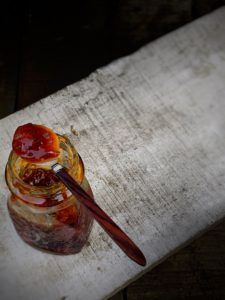
Jam and it’s travels
https://life.spectator.co.uk/articles/jam-beautifully-preserved-history/
Recipe for mixed fruit jam
Guava-2 (de-seeded)
Pomegranate-1 large (juice)
Cherries- 2 C pitted
Grapes- 1/2C pitted
Sugar- 1& 1/2C (approximately)
Lemon juice- 2 lemons
Pinch of salt (optional)
It is important to source good quality fruit without chemicals or pesticides.
If the skin of the guava is smooth and not discoloured leave it on, otherwise it can be removed.
Place all the ingredients into a large pan. Place it on the stove on low heat and keep stirring the ingredients now and then.Allow it to bubble away and reduce until the liquid from the fruit begins to turn into a sticky syrup. Take off the flame and allow it to cool.
Spoon into sterile glass jars and refrigerate.
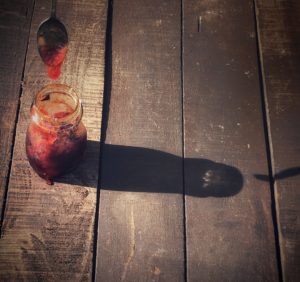

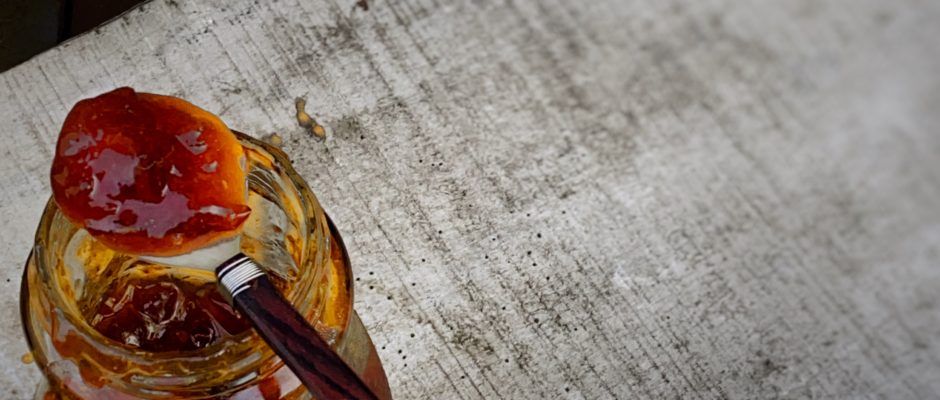
No comments yet.